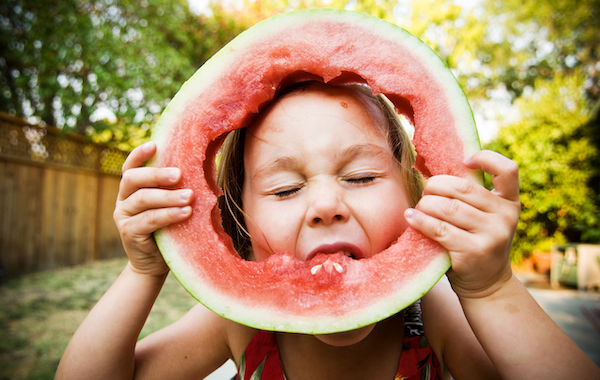25 water-rich foods to help you stay hydrated this summer
June 26, 2023

Summers in North Texas can be brutal. In 2022, we endured 47 days of 100-degree temperatures, making it the fourth-hottest summer on record (2011, with 78 days of triple digits, is No. 1).
And the summer of 2023 is shaping up to be another hot one – temperatures in the last week of June will be well above 100.
During this extreme heat, staying hydrated is particularly important because roughly 50%-70% of our body mass is made up of water. Cells, blood, muscles, tissues, and the brain all rely on water to function properly. When you lose even 2% of your body mass of water from sweating, you may begin to experience symptoms of dehydration and heat exhaustion, including headaches, fatigue, cramping, low blood pressure, and even confusion or loss of consciousness.
So, how much water should we drink every day? You’ve probably heard this advice: Eight glasses of water per day, or 64 ounces. But the National Academy of Medicine suggests daily intake should actually be higher: 92 ounces for women and 125 ounces for men.
If that seems like an ocean to you, don’t fret; it doesn’t all have to come from guzzling H2O.
Many healthy foods are high in water content, and they can help you stay hydrated. More than 20% of your daily water intake should come from something you eat rather than drink, so let’s take a closer look at some water-rich foods and how they can help you beat the heat.
More water-rich fruits and vegetables
- Radishes 95%
- Watercress 95%
- Portobello mushrooms 93%
- Okra 93%
- Bell pepper 92%
- Kiwi 90%
- Orange 88%
- Grapefruit 88%
- Carrot 88%
- Pineapple 86%
- Blueberries 8%
- Apple 84%
- Grapes 81%
Hydration hints and hacks
- Try infusing your water with fruits and vegetables for more flavor. Some favorites include watermelon, strawberries, cucumber, and herbs such as mint. Crush them up to release their flavors and then put them in the water and let them sit for a while.
- Try frozen fruits and vegetables to save money. They retain their water, don’t spoil, and taste great in a smoothie.
How can I tell if I’m getting enough water?
One of the primary ways we rid our bodies of water is through urinating, and the color of your urine is a quick way to gauge whether you’re getting enough water. If your urine is very clear, that’s a good sign you’re adequately hydrated. If it’s darker and more concentrated, that could be a sign you need to drink – or eat – more water.











